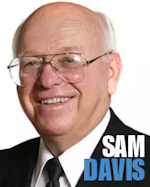In a recent note, James Peters, Deputy Chairman of power supply manufacturer, XP Power, called upon the industry to adopt a standard definition for “green”, energy-efficient component power supplies. Component power supplies are those that are built into electronic equipment, rather than attached as external units.
Peters points out that Energy Efficiency Level V specifications, as defined by the U.S. Environmental Protection Agency (EPA), apply to external power supplies and finished electrical/electronic goods but not to component power supplies. Today, designers of the end equipment have no way to quickly identify the most suitable AC-DC power supplies that will help them achieve compliance for their end products.
Energy Efficiency Level V specifications include considerations of efficiency when equipment is operating under less than full load, which in many applications can be more than 80% of the time. For example, items of office equipment, such as printers and faxes, are used only intermittently.
The major contributor to electrical losses in equipment operating in standby mode is the power supply. Power supply efficiency decreases as the load decreases.
XP Power has developed its own “green power” standard that specifies power limits for no-load operation of its AC-DC power supplies and minimum average efficiency for when they operate at 25%, 50%, 75% and 100% load. Appropriate criteria are defined for power supplies below 1 W (where linear regulators are often still used), from 1 W to 49 W, and greater than 49 W. XP Power has developed a “Green Power” logo, used in its documentation, to highlight products that meet standard. Peters wants other power supply vendors to adopt the same definitions in order that specifiers and buyers of power supplies can make better-informed choices.
Commenting on the initiative, Peters said, “The power supply industry can do more to contribute to reducing energy consumption than the EPA legislation demands, without adding cost or complexity to its products. The fact that the EPA does not specify requirements for component power supplies means that some opportunities for energy reduction, and subsequent reduction in CO2 emissions, are being missed. Based on our experience of power supply design and an understanding of the demands of our customers around the world, we’ve created a practical set of standards for our own products that we would like to see adopted by others. We’re asking industry trade associations, other vendors and end-customers to back this initiative, so that product designers will find it much easier to compare power supplies from different manufacturers and to identify the most energy-friendly units for their products.”
Do you have any comments about Peter’s proposed initiative? Or, do you have your own definition of “green?’ While it is commendable to adopt such an initiative, it is unlikely that all power supply manufacturers will follow suit. Especially in the low cost end of the market that is very price-sensitive, and where it has been more important to minimize component and production costs.
Also, the EPA should specify the requirements for component power supplies. Why do power supply companies have to develop standards unique to their own products? One organization that could help initiate standards for these supplies is the PSMA, Power Sources Manufacturers Association.
In 2007 the PSMA published The Handbook of Standardized Terminology for the Power Sources Industry--3rd Edition. Revised and expanded, this handbook contained hundreds of added terms, especially selected for the power electronics professional. The third edition also contained illustrations and four new appendices, including a listing of EMI specifications, excerpts from international standards of units and symbols, along with guides for authors of technical papers.
Until the EPA gets around to developing standards for component power supplies, maybe the PSMA should publish a 4th Edition that covers the meaning “green” and its impact on the power supply industry.
Related Articles
[07/2010] Turning Power Conversion Technology "Green"
[11/2007] Green Power Switch Boosts Resonant Converter Efficiency
[09/2009] 100-150W External Power Supplies Meet New Energy Efficiency Standards